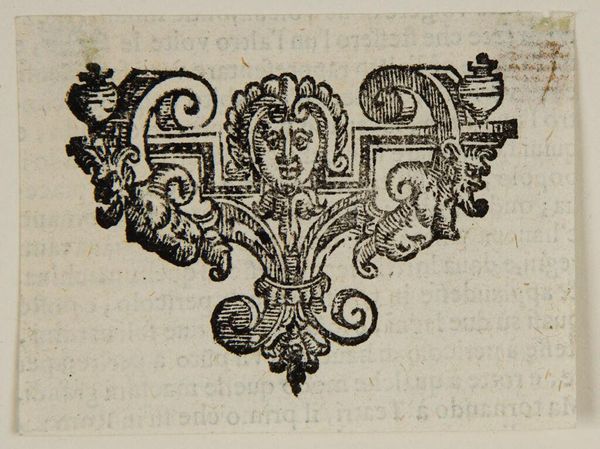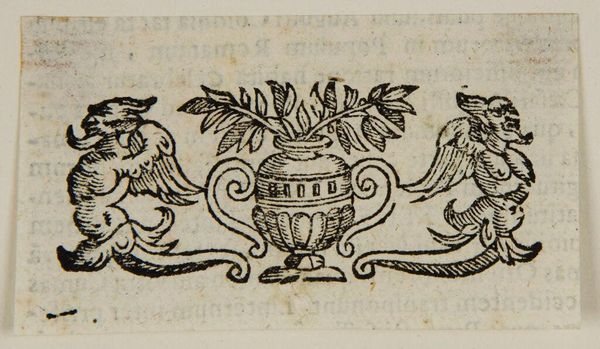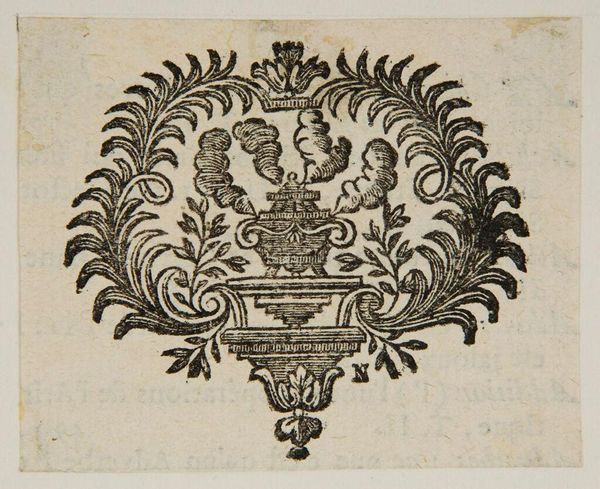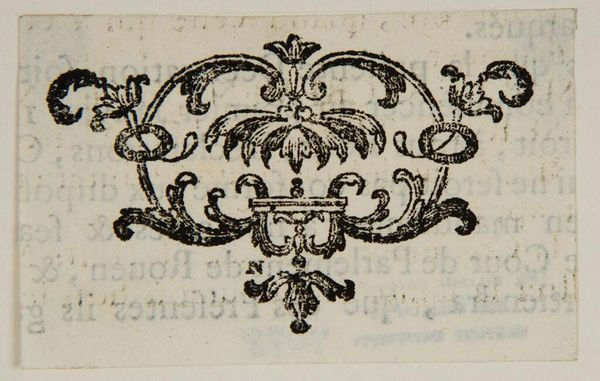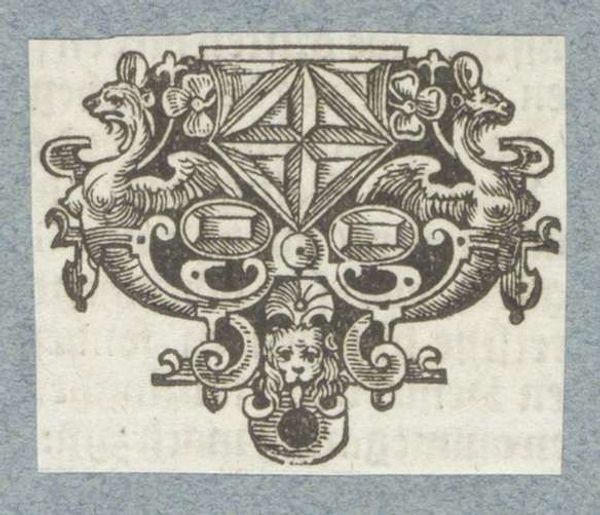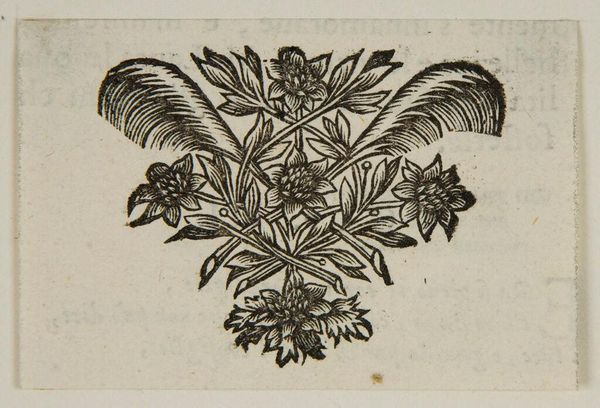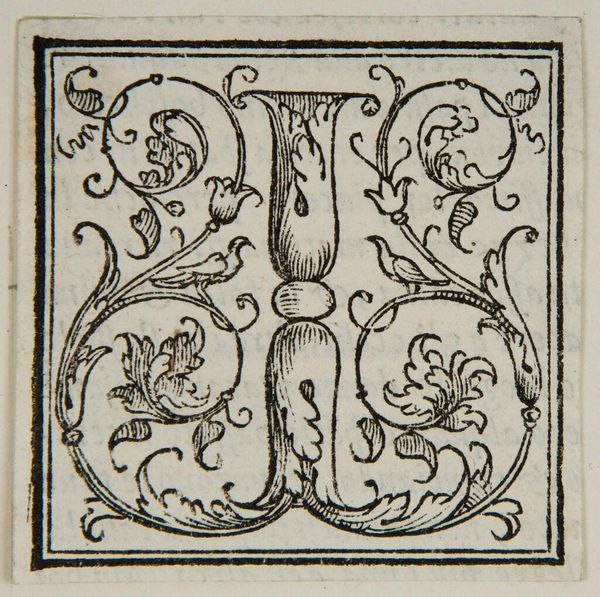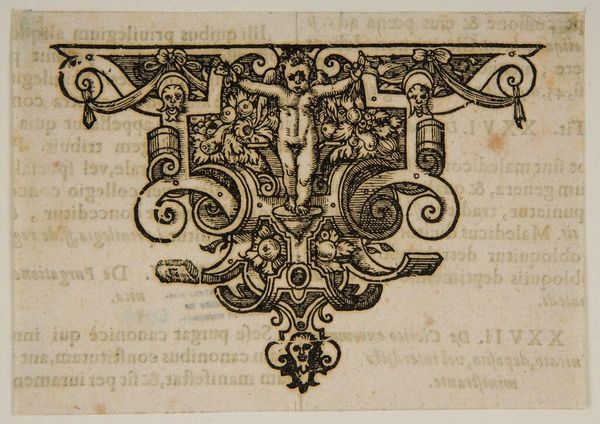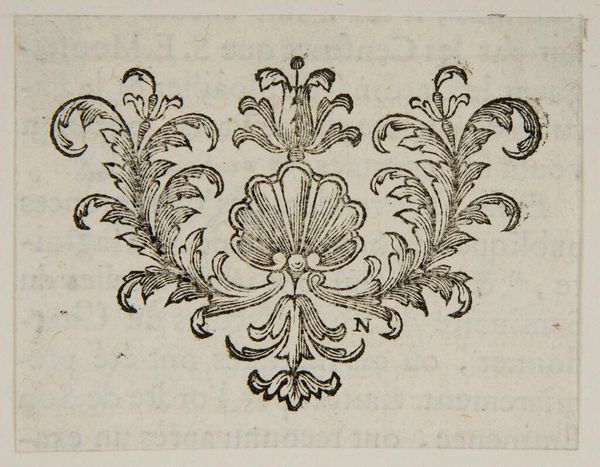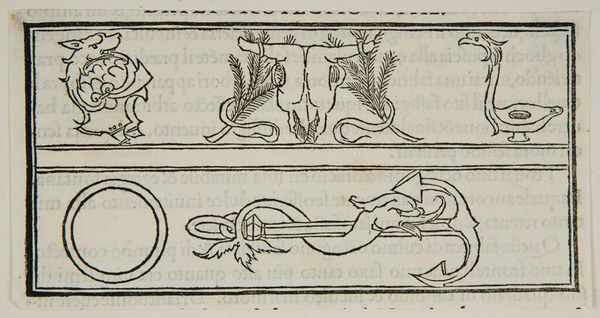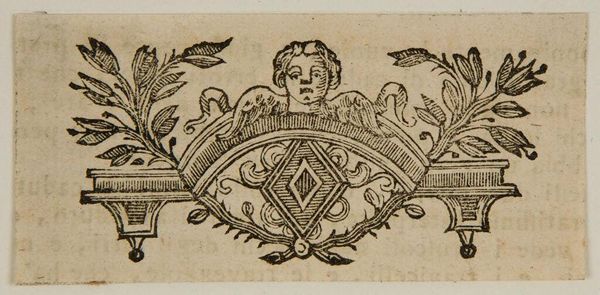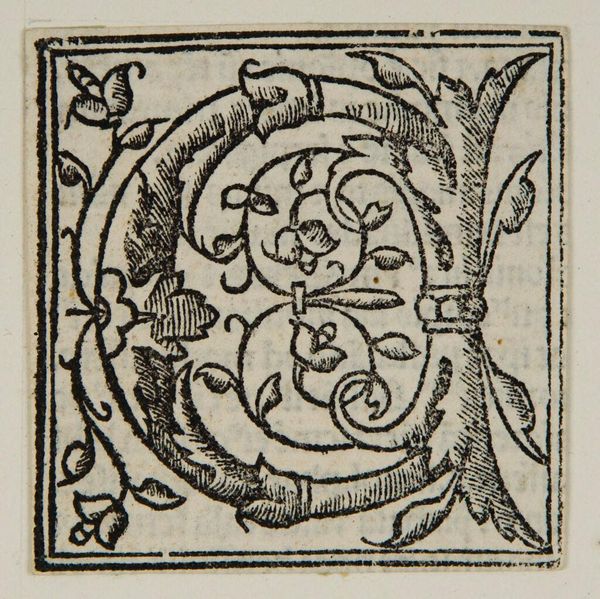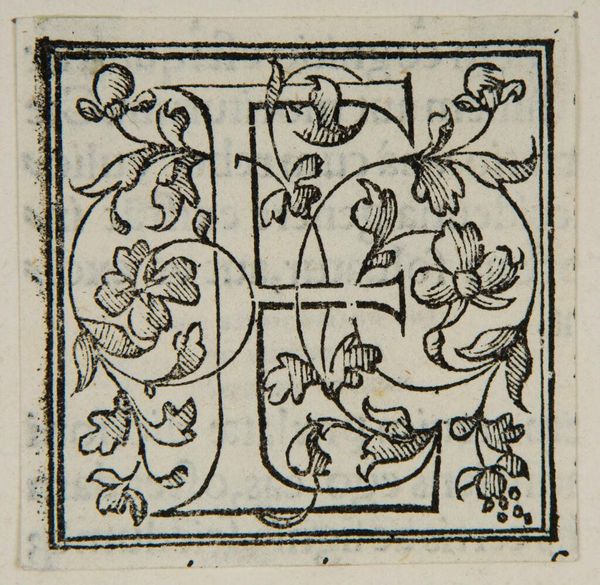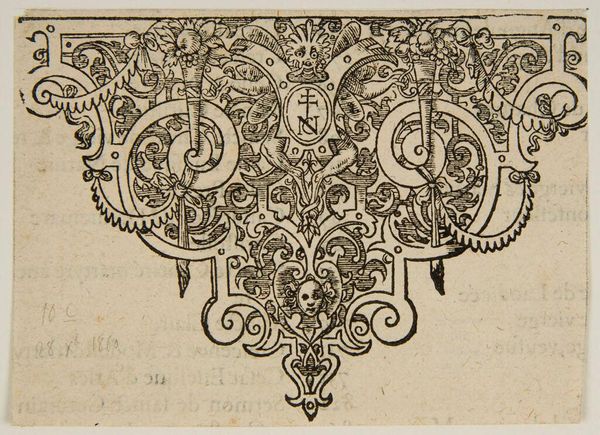
Dimensions: Sheet: 6.4 Ã 8.4 cm (2 1/2 Ã 3 5/16 in.)
Copyright: CC0 1.0
Curator: This is Jean Beugnet's "Tailpiece," a small etching held in the Harvard Art Museums collection. Editor: It's striking how much detail is packed into such a tiny space! The central image of the snake coiled around a staff, radiating light, immediately grabs your attention. Curator: Indeed. The caduceus motif, traditionally associated with medicine, is placed above what seems to be an elaborately decorated shelf. Considering this was used as a tailpiece, it likely served as a visual marker signifying the end of a text, possibly on medical matters. Editor: The composition, with its radiating lines and contrasting textures of the snake and foliage, creates a sense of closure and finality, doesn't it? A full stop, visually speaking. Curator: Precisely. It reflects the 18th-century European intellectual landscape, where detailed illustrations not only adorned texts, but also conveyed meaning about their content and cultural relevance. Editor: Looking closely, you can also appreciate Beugnet's skillful use of line to create depth and form in such a miniature format. Curator: It reminds us that even the smallest of images can carry significant cultural weight. Editor: A perfect ending, in more ways than one.
Comments
No comments
Be the first to comment and join the conversation on the ultimate creative platform.
